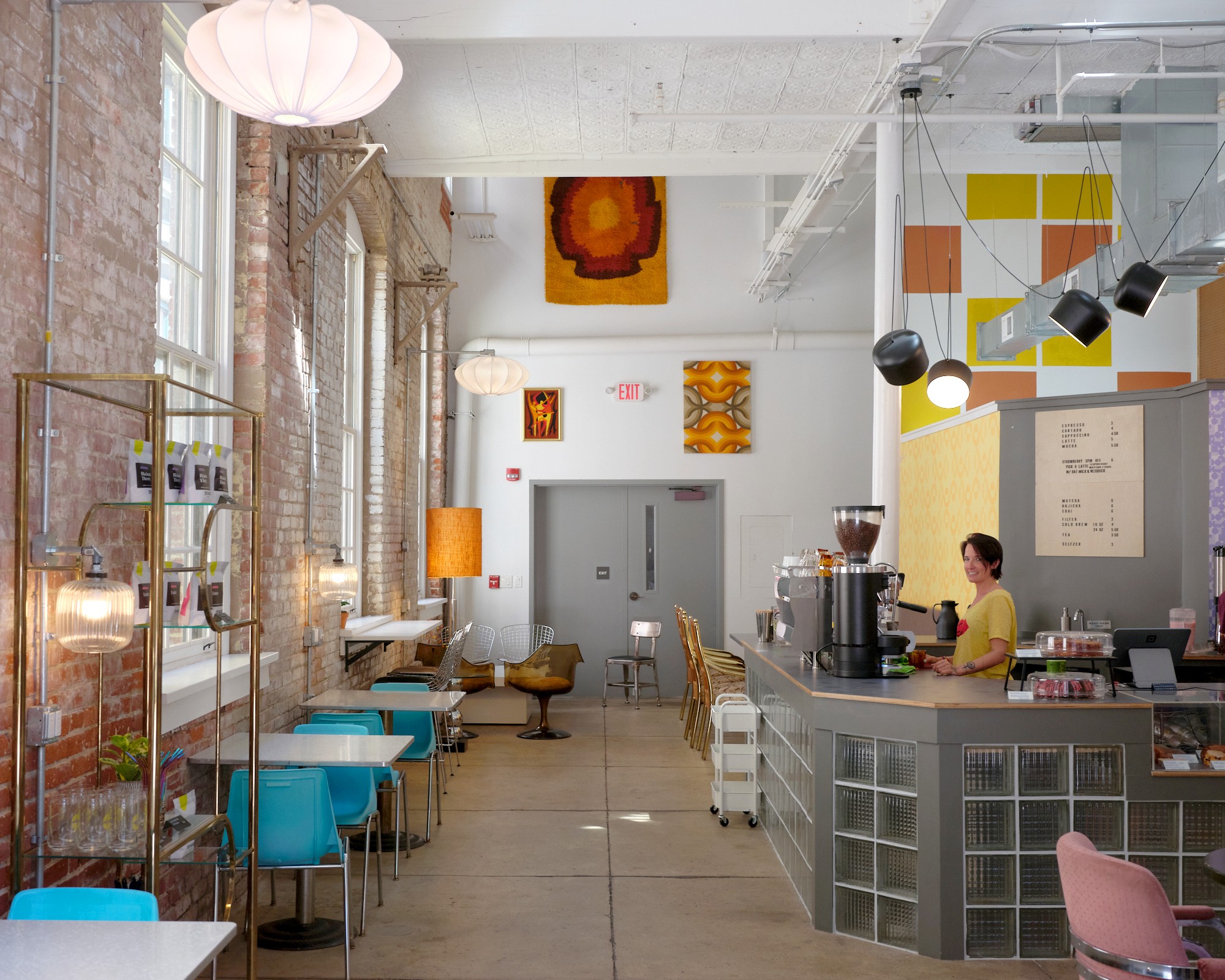We were lucky to catch up with Laura Fay recently and have shared our conversation below.
Laura, thanks for joining us, excited to have you contributing your stories and insights. What’s the backstory behind how you came up with the idea for your business?
The idea for Spectracolor was born out of a mix of heartbreak, reinvention, and a deep need to create something joyful. After leaving the brewery world I had built with my former partner, I found myself back at the starting line—still craving community, still obsessed with flavor and craft, but wanting to do it on my own terms. Coffee had always been a personal ritual and creative outlet for me, and I started to see it as more than just a beverage: it was a canvas for connection, emotion, and play. In those early days, I pictured a space that didn’t feel intimidating or overly serious, but instead felt fun, welcoming, and a little nostalgic—like flipping through a CD binder from the early 2000s or walking into your best friend’s bedroom covered in posters. That vision carried me through the uncertainty and gave me something bright to build toward.
What made me confident Spectracolor would work was the gap I saw in specialty coffee. So many roasters lean heavily into minimalism, seriousness, or exclusivity, and while there’s beauty in that, it didn’t reflect how most people actually experience coffee. I wanted to create a brand that made people feel something—where the flavors, the packaging, and the culture all spark joy, surprise, or even a little nostalgia. The logic was simple: people don’t just buy coffee, they buy how it makes them feel, and there wasn’t anyone really leaning into that emotional, pop-culture-infused approach. What got me most excited wasn’t just solving a problem—it was building a brand that could be playful and resonant, that invited people to drink coffee the way they live life: colorful, expressive, and full of personality.

Great, appreciate you sharing that with us. Before we ask you to share more of your insights, can you take a moment to introduce yourself and how you got to where you are today to our readers.
Laura Fay is no stranger to the hospitality business. For five years she built and ran Separatist Beer Project, a brewery based out of Easton PA with tasting rooms in the Lehigh Valley as well as Philadelphia. Separatist was one of many breweries that quickly grew and flourished during the latest craft beer boom. Fay co-founded the business with a partner and and oversaw all things visual such as creative design, branding, labels, and interior design. Separatist also allowed Fay to indulge in her passion for creating a product including coming up with beer names, flavor profiles and packaging. There was only one thing she didn’t really do craft the beverage.
AFTER SEPERATIST
Following her passion for the beverage industry Fay started to explore beverages that more aligned with her own interests and that she herself could create. She discovered her love for coffee. Over the
next couple of years she worked at two local roasters,while taking multiple Specialty Coffee Association classes at New York Coffee Project, in Queens. She started roasting at home and at Shared Coffee in Brooklyn to hone her roasting skills.
She came to miss operating a community space and creating a product for the community to enjoy. And so she decided to undertake opening a location where she could serve and sell a new product which she developed under the name of Spectracolor Coffee. Spectracolor’s coffee shop is outfitted in what she likes to call a “fever dream of color”. There are lots of 70s vibes with retro, poppy furniture, 70’s striped walls, and a psychedelic counter made of salvaged glass block..

Learning and unlearning are both critical parts of growth – can you share a story of a time when you had to unlearn a lesson?
One of the biggest lessons I had to unlearn was the idea that creativity in coffee only “counts” if it comes naturally. Flavor and crafting recipes were never instinctual for me—I’ve always been a visual person, more at home with design, culture, and aesthetics. For a long time, I thought that meant I wasn’t cut out for the craft side of coffee. But what I discovered is that skill doesn’t have to be innate; it can be learned with focus and persistence. I dove into education, studied intensely at places like New York Coffee Project, and put in countless hours of practice. The more I learned, the more confidence I built, and eventually my coffee met the level of my vision. That experience showed me that discipline can be just as powerful as natural talent, and that’s been a huge part of shaping Spectracolor.

How’d you build such a strong reputation within your market?
What really helped me build a reputation in my market was being willing to learn and immerse myself fully in coffee culture. I invested in classes, sought out mentoring from seasoned pros, and worked hard to learn the language of the industry so I could speak with confidence among peers. Just as important were the connections I made along the way—like learning from Donald “Barefoot Barista” Perdomo, whose generosity and skill left a lasting impact. Learning from quality control staff at Genuine Origin (green coffee importer), or from coffee farm owners who I took classes with. Those relationships, built on sharing knowledge and supporting each other, gave me both credibility and community. It wasn’t about going it alone, but about becoming part of a larger conversation in coffee culture.
Contact Info:
- Website: https://www.spectracolorcoffee.com
- Instagram: @Spectracolorcoffee
- Facebook: Spectracolor Coffee

Image Credits
Winston Zhou
Adam Atkinson
Leah Francis
Henry Hung


